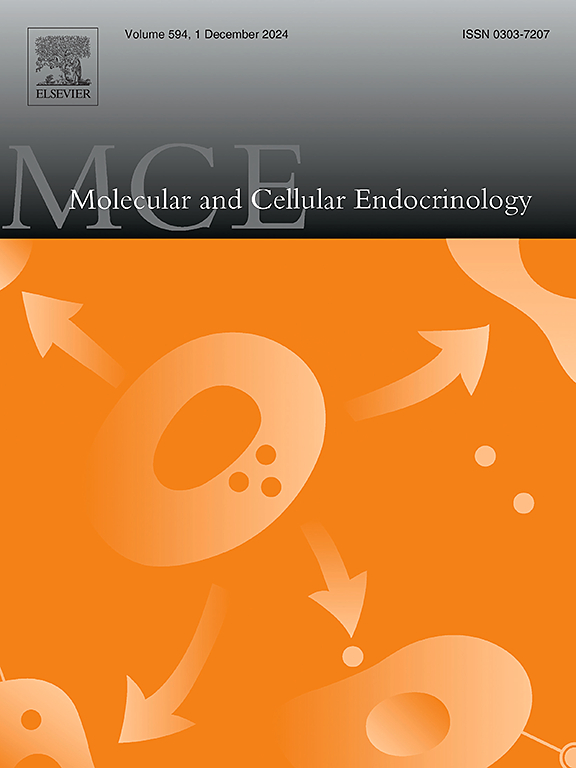Obesity prevention by different exercise protocols (HIIT or MICT) involves beige adipocyte recruitment and improved mitochondrial dynamics in high-fat-fed mice
IF 3.6
3区 医学
Q2 CELL BIOLOGY
引用次数: 0
Abstract
Aim
This study evaluated the effects of high-intensity interval training (HIIT) and moderate-intensity continuous training (MICT) on UCP1-dependent and UCP1-independent thermogenic and mitochondrial dynamics markers in the inguinal sWAT of high-fat-fed mice.
Methods
Sixty male C57BL/6 mice (3 months old) were divided into six experimental groups: control diet (C), C + HIIT (C-HIIT), C + MICT (C-MICT), high-fat diet (HF), HF + HIIT (HF-HIIT) and HF + MICT (HF-MICT). The diet and exercise protocols started simultaneously and lasted ten weeks.
Results
HIIT and MICT prevented body mass gain and fat pad expansion, improved insulin sensitivity, and induced browning in C-fed and HF-fed animals. Chronic intake of a HF diet caused adipocyte hypertrophy with a proinflammatory adipokine profile and impaired the expression of thermogenic and mitochondrial dynamics markers. However, both exercise intensities increased anti-inflammatory adipokine concentrations and improved gene markers of mitochondrial dynamics, resulting in sustained UCP1-dependent and UCP1-independent thermogenic markers and maintenance of the beige phenotype in inguinal sWAT. The principal component analysis placed all trained groups opposite the HF group and near the C group, ensuring the effectiveness of HIIT and MICT to prevent metabolic alterations.
Conclusions
This study provides reliable evidence that, regardless of intensity, exercise is a strategy to prevent obesity by reducing body fat accumulation and inducing browning. The anti-inflammatory adipokine profile and the increased expression of UCP1-dependent and UCP1-independent thermogenic markers sustained active beige adipocytes and mitochondrial enhancement to halt metabolic disturbances due to HF-feeding in exercised mice.
在高脂喂养小鼠中,不同运动方案(HIIT或MICT)预防肥胖涉及米色脂肪细胞募集和线粒体动力学改善
目的研究高强度间歇训练(HIIT)和中强度连续训练(MICT)对高脂喂养小鼠腹股沟sWAT中ucp1依赖性和非ucp1依赖性产热和线粒体动力学标志物的影响。方法雄性C57BL/6小鼠60只(3月龄),分为6个实验组:对照组(C)、C + HIIT (C-HIIT)、C + MICT (C-MICT)、高脂饮食组(HF)、HF + HIIT (HF-HIIT)和HF + MICT (HF-MICT)。饮食和运动方案同时开始,持续10周。结果shiit和MICT可防止c饲和hf饲动物体重增加和脂肪垫扩张,改善胰岛素敏感性,并诱导褐变。长期摄入HF饮食导致脂肪细胞肥大,具有促炎脂肪因子特征,并损害产热和线粒体动力学标志物的表达。然而,两种运动强度都增加了抗炎脂肪因子浓度,改善了线粒体动力学的基因标记,导致持续的ucp1依赖和ucp1独立的产热标记和维持腹股沟sWAT的米色表型。主成分分析将所有训练组与HF组相反,接近C组,确保HIIT和MICT预防代谢改变的有效性。这项研究提供了可靠的证据,证明无论强度如何,运动都是一种通过减少体脂积累和诱导褐变来预防肥胖的策略。抗炎脂肪因子谱和ucp1依赖和ucp1不依赖的产热标志物的表达增加,维持了米色脂肪细胞的活性和线粒体的增强,以阻止运动小鼠因喂食高频而引起的代谢紊乱。
本文章由计算机程序翻译,如有差异,请以英文原文为准。
求助全文
约1分钟内获得全文
求助全文
来源期刊

Molecular and Cellular Endocrinology
医学-内分泌学与代谢
CiteScore
9.00
自引率
2.40%
发文量
174
审稿时长
42 days
期刊介绍:
Molecular and Cellular Endocrinology was established in 1974 to meet the demand for integrated publication on all aspects related to the genetic and biochemical effects, synthesis and secretions of extracellular signals (hormones, neurotransmitters, etc.) and to the understanding of cellular regulatory mechanisms involved in hormonal control.
 求助内容:
求助内容: 应助结果提醒方式:
应助结果提醒方式:


